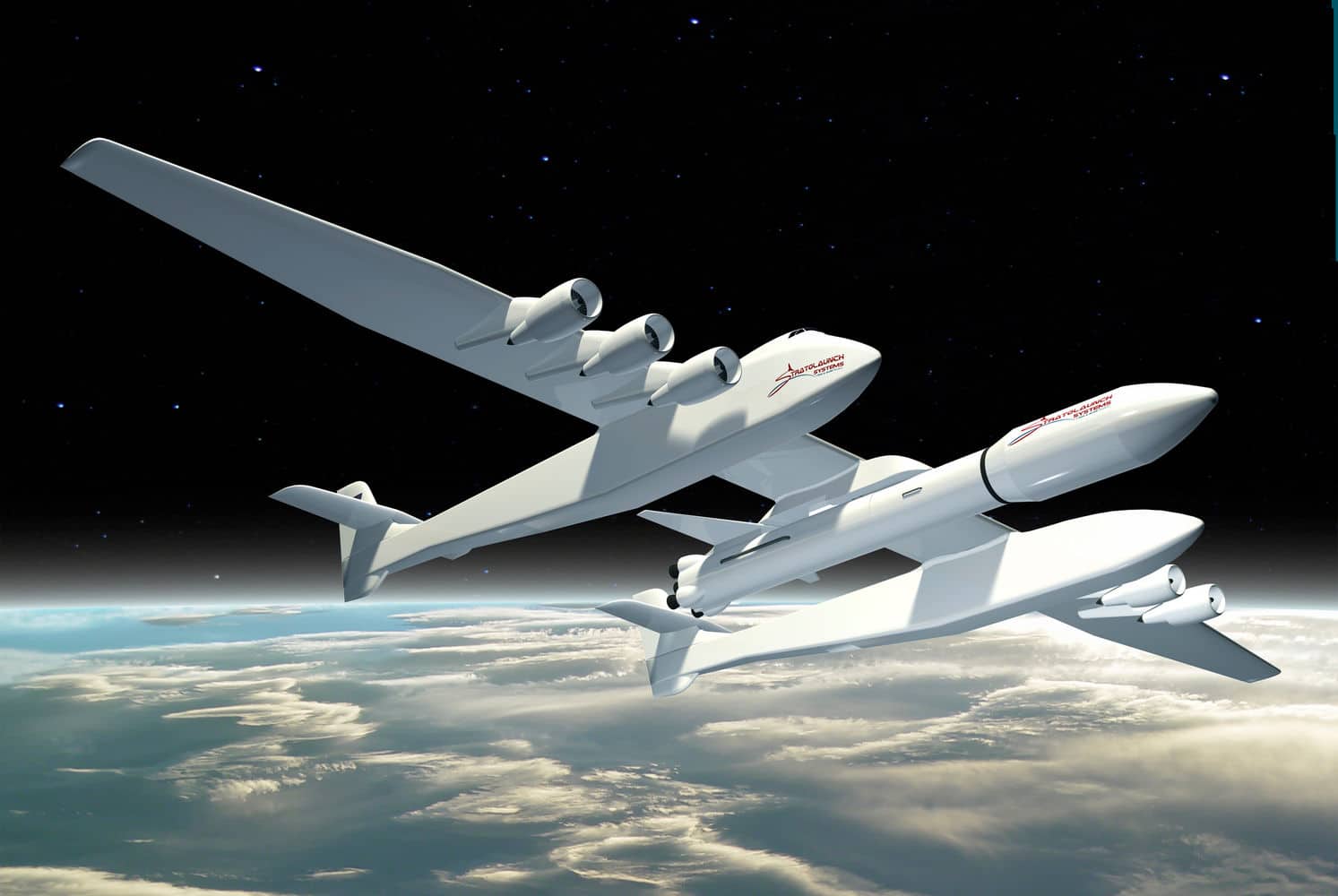Stratolaunch Systems, a space transportation project that comes under the aegis of Microsoft co-founder Paul Allen’s Vulcan Aerospace, is all set to launch the world’s biggest aircraft in the coming months. The move is part of the company’s plan to develop and air launch system capable of transporting payloads to low Earth orbit by using a large carrier aircraft.
Why Stratolaunch wants to make space more accessible?
The same is explained by Paul Allen himself in a succinctly worded post.
‘Built primarily of strong yet light carbon fiber and powered by six 747 engines, Stratolaunch will be able to carry up to 550,000 pounds of payload and offer its customers a consistent, flexible and viable alternative to traditional ground-launched rockets.’
Paul then goes on to explain the benefits of the air-launch approach that Stratolaunch is aiming for:
‘First, with aircraft-like operations, our reusable launch platform will significantly reduce the long wait times traditionally experienced between the construction of a satellite and the opportunity to launch it into space.
Second, because Stratolaunch is designed with a flight radius of up to 1000 nautical miles and can launch from different runways, it will offer scientists, businesses and space entrepreneurs much greater flexibility, such as the potential to evade local weather problems that often impose untimely delays on traditional vertical rocket launches.
Third, with shorter wait times, greater flexibility and more missions per year, we will be able to lower costs and increase opportunities to put small satellites into LEO. And when such access to space is routine, innovation will accelerate in ways beyond what we can currently imagine.’
That’s awesome! What is this new, gigantic aircraft like?
The Stratolaunch aircraft, initially named Roc (after that giant mythical bird in Arabian folklore), is a twin-fuselage craft that combines engines, landing gear and other such parts from a couple of Boeing 747 jets coupled with a frame, wings and skin handmade of lightweight composites. Weighing at a massive 5, 44,311 kg and a maximum speed of 450 knots (roughly 850km/hr), the craft is as big as a football field and will be custom built to launch satellites into the orbit. It has a wingspan of 117 meters and you can see how it stacks up against other planes (just to get a measure of its immense size):
The plane has six-engines, and is way bigger than Howard Hughes’ 1947 H-4 Hercules (also known as ‘Spruce Goose), as well as the Antonov An-225, a Soviet-era cargo plan that was built to transport the Buran space shuttle. It is designed to carry a rocket and payload having a combined weight of 250,000 kg, and will work in a manner so as to quickly and directly deliver satellites into very precise orbits, without any launch range scheduling concerns and weather-related delays.
Around 76% of the plane has already been assembled, with the engines, landing gear and one tail section yet to be installed. Development is still underway, though the plane is expected to be finished before end-2016. Commercial operations for the Roc are anticipated to start before 2020.
According to the latest reports, Stratolaunch is looking for partners to provide launch vehicles as the aircraft nears completion.
Stratolaunch Seeks Launch Partners as Aircraft Nears Completion https://t.co/T2cvaBGh2f
— SPACE.com (@SPACEdotcom) June 22, 2016
How is Stratolaunch different from SpaceX and Blue Origin?
It is no secret that many visionaries have established companies that intend to build commercial highways to space. Some of the major, big-league players are Elon Musk’s SpaceX, Jeff Bezos’ Blue Origin, and Richard Branson’s Virgin Galactic. So how exactly does Stratolaunch differ from the competition? The entire discussion can be easily summarized into three points:
- Elon Musk wants to fly people to Mars
- Bezos seeks to develop low-cost, reusable rockets that can move energy-intensive, heavy industry off Earth
- Branson, as expected, is focusing on space tourism and a small satellite launcher
As technology advances at a breakneck speed, and more companies look to invest in space exploration, it can be safely assumed that sooner or later, we will be witnessing a future that looks like something straight from a Star Trek movie!















Leave a Reply